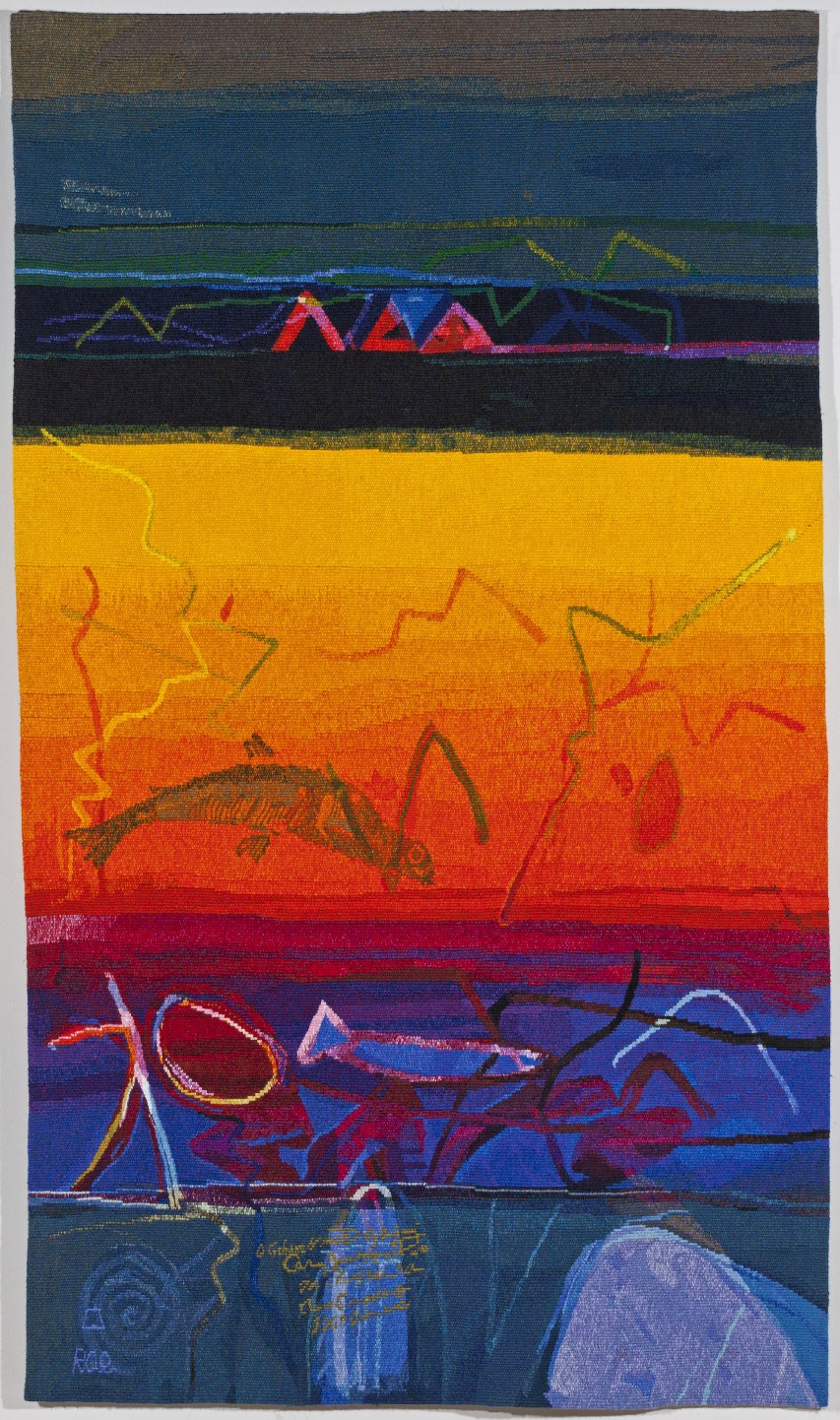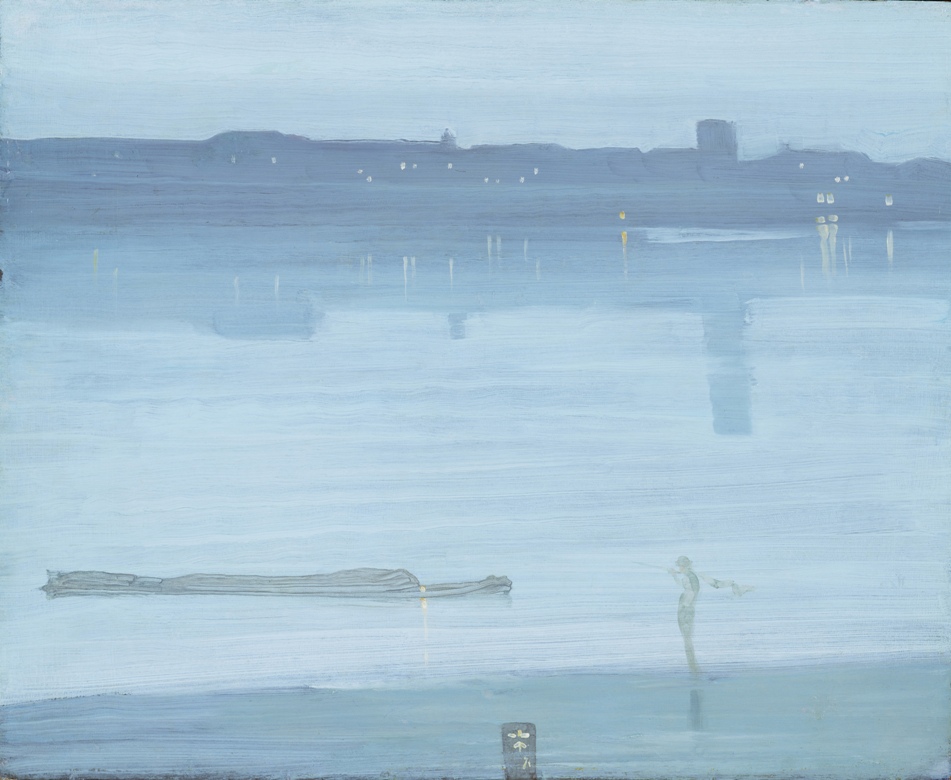East coast haar seeping into sun-drenched streets – familiar Edinburgh monuments disappearing dreamlike under blankets of mist, vibrant colour draining from the landscape as the city transformed into its more usual symphony in grey. The dramatic change in weather during the first weekend of the Edinburgh Art Festival has mirrored the overwhelming experience of one of this year’s major exhibitions.
Van Gogh to Kandinsky: Symbolist Landscape in Europe, 1880–1910 is a joint project between the National Galleries of Scotland, the Van Gogh Museum in Amsterdam and the Ateneum Art Museum in Helsinki (showing until 14 Oct). The theatrical impact of the carefully composed exhibition makes an immediate attack on the senses: crepuscular tone broken by vibrant colour swatches. The works reflect feelings of fear and pessimism, as well as a longing for spirituality and mythology. But the overall effect is in no way a gloomy experience. The different rooms lead through dream landscapes: decaying and deserted cities on towards a final mystical destination. Huge canvases of cataclysm and unnamed doom dominate several of the rooms drawing the eye and instantly affecting the emotions. Leon Bakst’s Terror Antiquus, Jens Ferdinand Willumsen’s Sun Shining on the Southern Mountains and George Watts’s After the Deluge assault with their boldness of image.
One of the very best additions to Edinburgh in recent years has been the Dovecot Studios
Elsewhere it is the subtlety of the evocative and poetic colour harmonies of Whistler and others which haunt and inspire. While many well-known artists feature, the exhibition is all the more welcome for introducing others who are little known outside their own countries and for recreating the atmosphere of a movement which permeated the whole of Europe. It also experiments with introducing related music to enhance the depth and sensuality of the viewer’s experience. The exhibition leaves you in a slightly altered state of mind, pondering the links between the brain, the senses and how and what we perceive. (Whistler's Nocturne pictured overleaf.)
 Edinburgh Printmakers is also showing images of doom in Cheer up! It’s not the end of the world… (until 8 September). Our endless fascination with the end of time, currently predicted for 21 December 2012, is illustrated by Gordon Cheung, Lori Nix, Martin Barrett and others.
Edinburgh Printmakers is also showing images of doom in Cheer up! It’s not the end of the world… (until 8 September). Our endless fascination with the end of time, currently predicted for 21 December 2012, is illustrated by Gordon Cheung, Lori Nix, Martin Barrett and others.
One of the very best additions to Edinburgh in recent years has been the Dovecot Studios – an old swimming baths converted into a beautiful gallery and working space to display the art of modern tapestry. Weaving the Century: Tapestry from Dovecot Studios 1912-2012 (until 7 Oct) is a centenary exhibition which not only shows the broad range of artistic and weaving styles but tells the story of the rise and fall and rise again of one of the world’s most innovative centres of textile art production. The rejuvenated fortunes of the Edinburgh Tapestry company were linked to their decision to invite well-known artists to design for them. These included Graham Sutherland, Edward Bawden, Cecil Beaton, Edward Wadsworth, and more recently David Hockney, Eduardo Paolozzi, Robin Philipson, Elizabeth Blackadder, Barbara Rae (Fishpool Lacken pictured above right) and Peter Blake.
You could think translating a sketch or painting into tapestry would be making a woollen copy. What the exhibition reveals is that something deeper is added: how the colours interact, the quality and character of the lines, the overall mood and atmosphere come together so that not only is the spirit of the original captured but by some alchemy an entirely new piece of art emerges. Once you have seen these tapestries and rugs you cannot help but look at works in other exhibitions, and wonder what they would look like woven at the Dovecot Studios.

Another Scottish centenary is celebrated at the Scottish Gallery (until 5 Sept) with a small exhibition of the work of Wilhelmina Barns-Graham, the St Andrews-born artist who was part of the St Ives group of modernist painters. Hung in a small downstairs gallery which looks out onto a secluded garden, the paintings sparkle like bright jewels in a small box.
Pink is the colour of the Late Paintings by Philip Guston at Inverleith House, Royal Botanical Gardens (until 7 Oct). In these works Guston has created his own world of grotesques – like a strange Grimm’s fairy tale. The exhibition is much enhanced by watching the accompanying video which catches the energy and verve of the artist and his drive to make something real for his audience, his constant reinvention and need to learn more, to experience and to convey something which is not just the reworn treads of work he had outgrown.
The viewer observes the small daily activities of the artist’s final year of life
A Life in Colour is a major retrospective of the work of Leslie Hunter at the City Art Gallery (until 14 Oct). The least known of the Scottish colourists, this exhibition sets out to re-evaluate his position. It shows someone who was always looking to find a style which best expressed what he saw and felt. The exhibition moves chronologically through his life, from Scotland to San Francisco to Paris, Glasgow, Fife, Italy, the South of France and London. He ranges, too, across landscape, portrait, still life, sketches of scenes from everyday life, and the influence of artists from many eras but particularly Cézanne and Matisse. He seemed always restless and looking for something which at his early death he had not yet finally found.
The City Art Gallery is also showing a complementary exhibition, The Scottish Colourists: Inspiration And Influence, which includes works by some of the artists who influenced Hunter, and those who have been influenced by him. It’s a very good introduction to a wide range of Scottish artists who may not be as well known as the Colourists themselves. Influence is also the subject of Picasso and Modern British Art at the Scottish National Gallery of Modern Art (until 4 Nov). There are 60 paintings, drawings and prints by Picasso in the exhibition which tell the story of most of the major developments in 20th-century art and reveal the central role Picasso played in all of them. (See theartsdesk review when it was shown at Tate Britain.)
At the entrance to the darkened gallery space of the Fruitmarket, a wall of 128 flickering TV monitors confronts and challenges. Watching Solo Scenes, part of the Dieter Roth Diaries (until 14 October), the viewer observes the small daily activities of the artist’s final year of life: getting up, making a cup of tea, getting dressed, reading, shown like small plays across the monitors simultaneously. The artist does not speak or even look to camera. There are no words in these diaries. It is not surveillance as such nor voyeurism. He has nothing to hide, so it seems. It is an interior still life, an accumulation of small detail. But how do we read it? There is so little sense of who the artist is, what he might be feeling or thinking. All we have are small movements of slow activity. We are left asking what is revealed without words, without interaction with others. Would words add or subtract?

The exhibition Expanding Horizons, Giovanni Battista Lusieri & the Panoramic Landscape, at the National Gallery of Scotland (until 28 Oct) is entirely devoted to the work of the now little-known landscape watercolourist Giovanni Battista Lusieri (1754-1821). In his time he had been well-respected and much sought after particularly by the British for the precision and skilled draughtsmanship of his panoramas. The detail of his work is meticulous, almost photographic and his large-scale views of Naples (pictured above) in particular are, as a contemporaneous commentator remarked, ”the most exact and eloquent transcriptions of nature I ever saw”. The watercolour palette he uses is fairly restrained in blues, greens and browns which seems to help the viewer’s concentration on the detail . The one oil painting, showing Vesuvius erupting, is colourful and glossy in comparison. The unfinished sketches and his extraordinary flat outlines in pen and ink are more than the negatives or bones of the finished work. Lusieri evokes and represents the Grand Tour to perfection. This exhibition to bring him back to the public’s attention and highlight his exceptional gifts should also give a huge boost to the important skills of drawing itself.
You can create your very own panoramic landscape in Lusieri-style at the interactive networked sculpture exhibit a Yen to see different places devised by In the Fields at New Media Scotland. Your idealised Scottish landscape can then be seen through a public telescope in St Andrew Square (until 2 Sept). This is one of the Festival’s Promenade commissions located throughout the city and which invite you to see and hear and engage with the city differently and with greater awareness.
- Edinburgh Art Festival until 2 September but check individual venues for running times









![SEX MONEY RACE RELIGION [2016] by Gilbert and George. Installation shot of Gilbert & George 21ST CENTURY PICTURES Hayward Gallery](/sites/default/files/styles/thumbnail_125_x_125_/public/mastimages/Gilbert%20%26%20George_%2021ST%20CENTURY%20PICTURES.%20SEX%20MONEY%20RACE%20RELIGION%20%5B2016%5D.%20Photo_%20Mark%20Blower.%20Courtesy%20of%20the%20Gilbert%20%26%20George%20and%20the%20Hayward%20Gallery._0.jpg?itok=3oW-Y84i)




Add comment